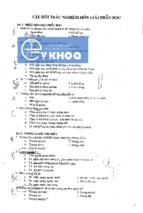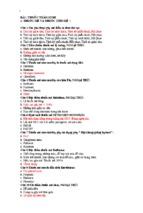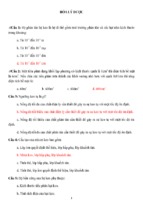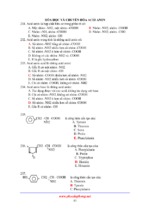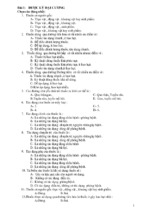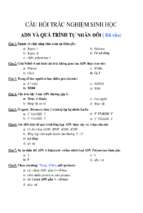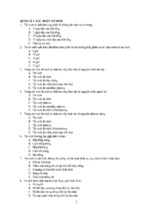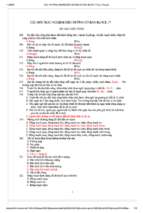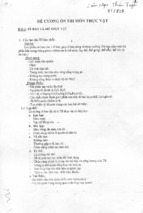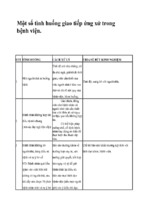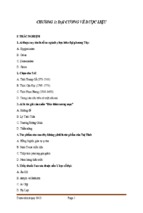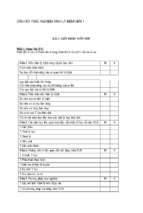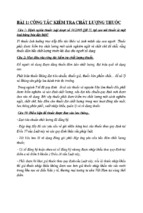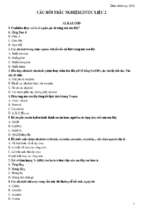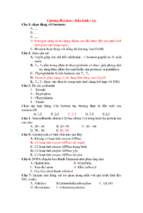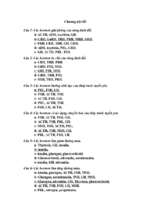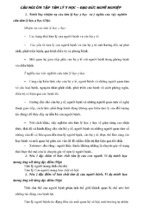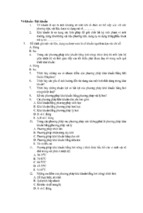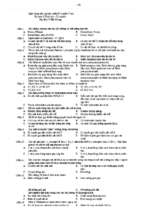1. What is the main idea of the text?
Knowing the difference between good health and bad health is important
People all over the world have different ideas of what “good health” means.
Exercising, a healthy diet and reducing stress lead to a healthy life
2. Tai Chi, Yoga and taking a walk are examples of
changing how you think
how we live now.
ways to reduce stress
3. Beans, grains, fruit and vegetables are examples of what?
Foods with fiber
Foods you should eat several times a day
Foods that can cause obesity
4. What is one cause of obesity?
Foods high in fiber
Unhealthy foods
A lot of exercise
5. The word It refers to:
Stress
Work
World
6. In which order were these presented?
Diet, stress, exercise
Exercise, diet, stress
Stress, diet, exercise
7. Everyone agrees on how to have good health -> F
8. You must do difficult exercise for a long time every day to be healthy -> F
9. To be healthy people have to stop all stress in their life -> F
Allergies
Some people suffer from hay fever when pollen is in the air. Others develop skin rashes when
they touch certain substances. Still others experience stomach cramps after eating particular foods.
These ailments are all caused by allergic reactions to various substances. In most cases, an allergy
causes relatively mild symptoms such as sneezes from breathing dust. A rare and severe allergic
reaction can occasionally lead to death. Death from bee stings is an example of this severe type of
allergic reaction. When possible, one should avoid contact with the pollens, foods or whatever has
previously caused an allergic reaction. Many substances are so widespread, however, that it is
difficult to avoid them. These include dust, pollens, and polluted air. When allergy is severe, it is
possible for a physician to desensitize the person to the allergen by injecting a small amount of an
extract of the allergen under the skin, and gradually increasing the dose until a tolerance to the
allergen is built up.
1. Allergic reactions ------ .
a. are usually not too serious
b. unfortunately often end in death
c. are experienced by all people
d. are always the cause of rashes
e. usually make people sneeze
2. We can assume from the passage that dust, pollens and polluted air ------ .
a. should be avoided at all costs, or the sufferer may die
b. are among the deadliest of all allergens
c. are allergens that are hard to avoid
d. are the greatest threat to allergy sufferers in urban areas
e. account for the death of many people so far
3. We can conclude from the passage that ------ .
a. the most common allergic reaction is to bee stings
b. allergens and allergic reactions are of various types
c. a sufferer can only avoid allergens through professional assistance
d. most allergy sufferers develop stomach pain after eating some foods.
e. doctors are usually helpless in allergy cases
4. The word "tolerance" is closest in meaning to________.
a. the ability to suffer something without being harmed
b. the ability to resist something
c. the ability to suppress something
d. the ability to prevent something
5. In some cases, allergies can be life-threatening. True
Relative risk
“It was a tight pain, around my chest, just like when I had my heart attack 40 years ago.” He went on
to give a textbook history of cardiac chest pain, which had kept him awake all night two nights
previously. When I asked him why he had not sought help sooner, he told me that he had been
looking after his son’s pets while he was away for an important job interview: I proceeded to ask
about risk factors for ischaemic heart disease, starting with smoking. “Yes, I did smoke, but then
again, everyone did then ... you would have too.”
Intrigued, I asked what he meant. “I was a Spitfire pilot during the war. Not the normal planes, but the
ones on the aircraft carriers. The landing deck was only about 300 feet [about 100 m] long and about
75 feet wide. What made it even harder was that it was a moving target in rough seas. When you’ve
done that, chest pain doesn’t seem quite so bad.”
His blood troponin concentration was elevated at 1.73 µg/l, and we advised hospital admission for
observation and optimisation of his medication. “No thanks, doc,” he replied, “It’s the Bowls Club
Christmas dinner tonight – I don’t want to miss it.” We counselled him as to the risks, but he would not
stay. It was all we could do to stop him walking the short distance home, rather than waiting for
transport.
Although I was initially concerned by his refusal to stay, on reflection, I think he made the correct
decision. We work in a risk averse environment and often lose perspective. For him, the risk of
another ischaemic event or arrhythmia was taken in the context of what he had been through all
those years ago. He could not contemplate the possibility of his son missing out on a valuable job
opportunity, or not catching up with his friends at their annual dinner, just so that he could stay in
hospital.
He has taught me a valuable lesson – risk is relative.
Anesthesia
True/False/Not given:
1. Dioscorides’ book, De materia medica, fell out of use after 60 A.D ? F
2. Mandragora was used as an anesthetic during the Middle Ages T
3. Nitrous oxide can cause the user both laugh and cry T
4. During the second half of the 19th century, most dentists used anesthesia NG
5. Anesthesiologists in the United States are required to have 12 years of education and training T
6. There are fewer anesthesiologists in the United States now than in the past F
7: used by sprinkling on a handkerchief
8: used on only one specific part of the body
9: used by boiling with wine
10: used first during a dental procedure
11: used to stop feeling over a larger area of the body
12: used in the first anesthetic machine
chloroform
local anesthetic
mandrake
nitrous oxide
general anesthetic?
ether
- Xem thêm -

